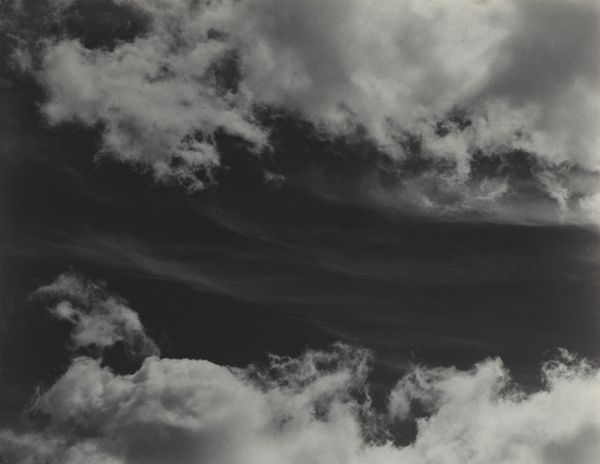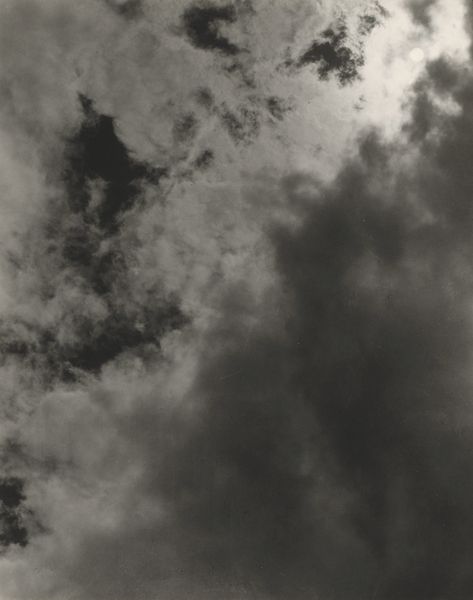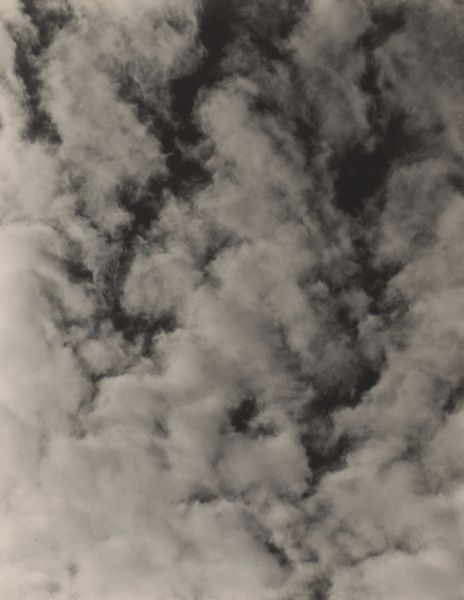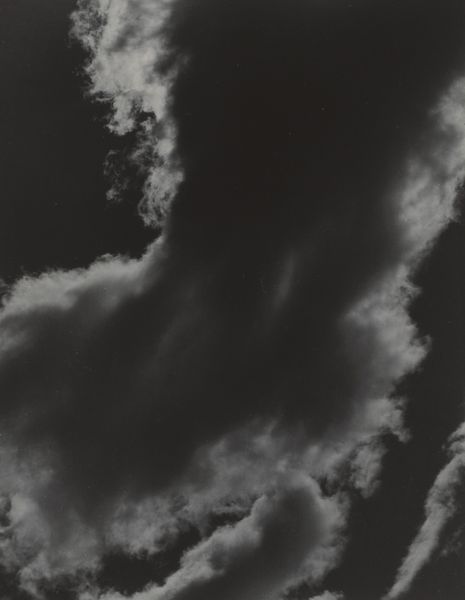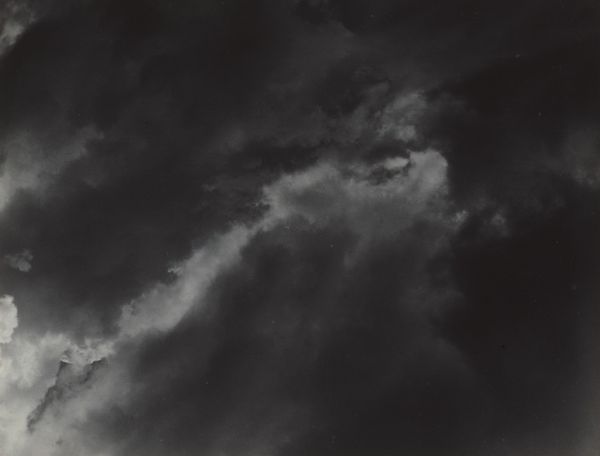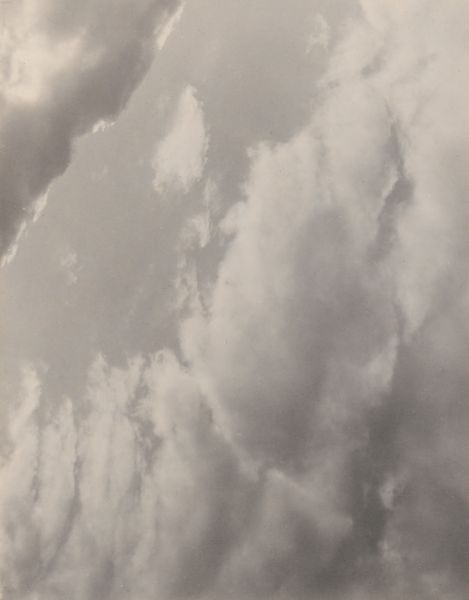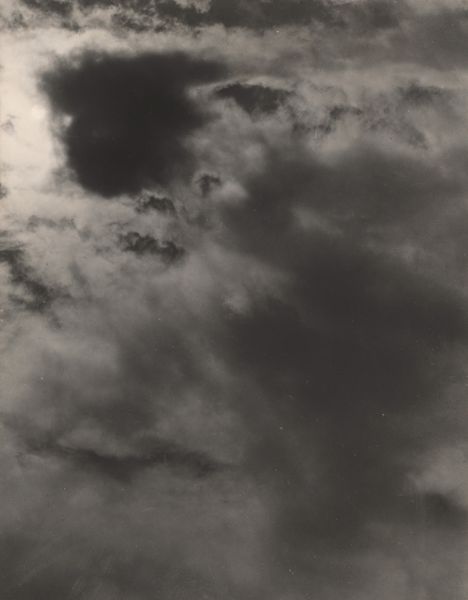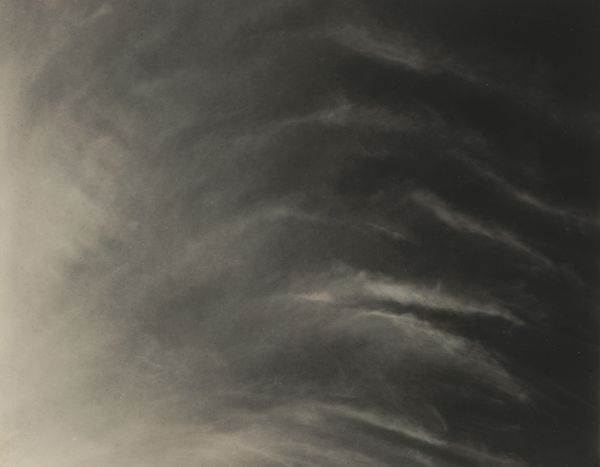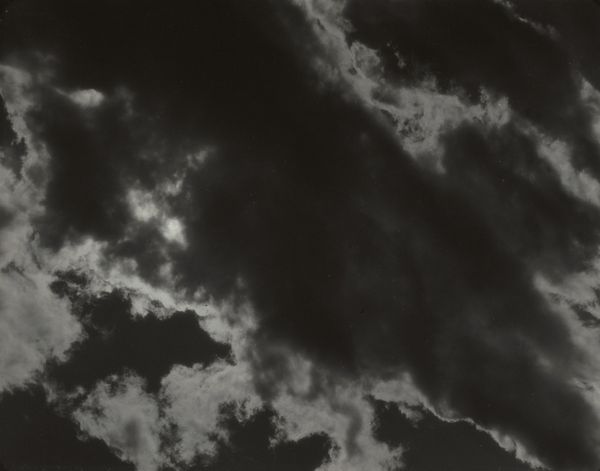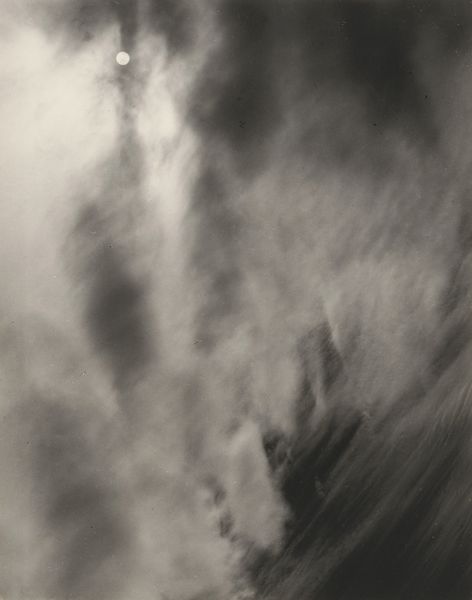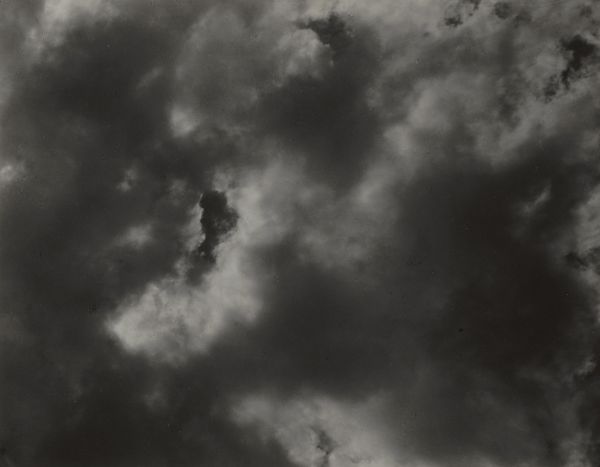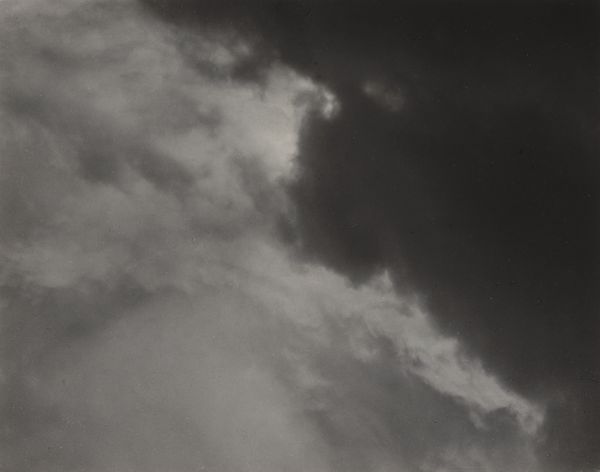
Dimensions: sheet (trimmed to image): 9 x 11.5 cm (3 9/16 x 4 1/2 in.) mount: 34.3 x 27.5 cm (13 1/2 x 10 13/16 in.)
Copyright: National Gallery of Art: CC0 1.0
Editor: So, this is Alfred Stieglitz’s "Songs of the Sky D4," a gelatin-silver print from 1923. It’s… moody, almost entirely grayscale, and looks like clouds. It's so different from what I usually associate with photography of that era. What do you see in this piece, beyond just… clouds? Curator: I see Stieglitz engaging in a deeply political act of self-expression. These "Songs of the Sky," or "Equivalents," as he sometimes called them, were made during a time of intense social upheaval, the rise of industrialism and the first World War, which led to cultural anxieties and fractured identities. He uses these clouds, seemingly apolitical subjects, as metaphors for inner emotional states. He uses abstraction as a way to bypass the censorship imposed, especially on women artists like his wife, Georgia O'Keefe. What do you think this abstraction offers him? Editor: I guess it lets him talk about feelings without being direct? So it’s a kind of coded language? It seems like a safe way to protest…but against what, exactly? Curator: Precisely. It’s a protest against the rigid structures of society, against the limitations placed on artistic expression, particularly for those who did not have platforms. The rise of abstraction across art forms during this period was a refusal to represent the world as it was dictated, a reclamation of subjective experience. This connects with broader societal issues – think about the women's suffrage movement gaining momentum at the time, or the Harlem Renaissance. Are the swirling clouds not just a landscape, but also representational of social movements themselves? Editor: That makes me see it in a completely different light! I was just thinking about aesthetics. Now it feels like it's whispering about something bigger. Curator: And that whisper can become a shout when we situate it within its historical and cultural context. Abstraction becomes a powerful tool for voicing dissent and reclaiming personal and cultural identity. How might contemporary artists utilize abstraction in similar ways today? Editor: It's amazing how one image of clouds can be so layered and connect to so much. I'll definitely look at abstract art differently now.
Comments
No comments
Be the first to comment and join the conversation on the ultimate creative platform.
